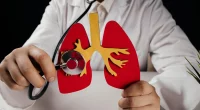Arthritis is a term for more than 100 different conditions where joints and surrounding tissues become inflamed and damaged. This can cause pain, stiffness, and difficulty moving. Three common types are rheumatoid arthritis, osteoarthritis, and psoriatic arthritis. Each type has its own causes.
Osteoarthritis is the most common type and usually occurs as people get older. Other usual types include rheumatoid arthritis and gout.
Arthritis is quite common, affecting about 1 in 4 adults in the US, which is about 58.5 million people. It’s more common in older adults, especially those aged 65 and above, but it can also affect all aged people, even children.
Types of Arthritis
There are around 100 kinds of arthritis, which can generally be categorized into the following groups.
Inflammatory arthritis
Inflammatory arthritis involves inflammation that occurs in the body without a clear cause. This inflammation can damage joints, leading to pain, swelling, and stiffness. Examples of inflammatory arthritis include rheumatoid arthritis (RA), ankylosing spondylitis, reactive arthritis, and psoriatic arthritis. These conditions can affect multiple joints and cause damage to the joint surfaces and basic bones.
Degenerative or mechanical arthritis
Degenerative or mechanical arthritis, on the other hand, primarily affects the cartilage covering the ends of bones in the joints. This smooth cartilage helps joints move smoothly, but in degenerative arthritis, it becomes rougher and thinner. The body may try to compensate for this by remodeling the bone, leading to the development of bony growths called osteophytes. This type of arthritis is commonly known as osteoarthritis and can be caused by factors such as earlier joint injuries or inflammation.
Connective tissue disease
Connective tissue disease (CTD) affects the tissues in the body that support, bind, or separate other organs and tissues, such as ligaments, tendons, and cartilage.
This condition often leads to inflammation and joint pain. However, the inflammation can also occur in other parts of the body, along with the muscles, skin, kidneys, and lungs, causing various symptoms beyond just joint pain. Due to the complexity of CTD and its potential impact on different organs, it may require consultation with multiple specialists for proper management.
Instances of CTD include systemic lupus erythematosus (lupus or SLE), systemic sclerosis (scleroderma), dermatomyositis, and Sjogren’s syndrome.
Infectious arthritis
Infectious arthritis can occur when bacteria, viruses, or fungi infect a joint. These organisms can enter the joint through various means, such as food poisoning, sexually transmitted diseases (STDs), or blood-to-blood infections.
Common pathogens that can cause joint infections include salmonella, shigella, chlamydia, gonorrhea, and hepatitis C. Treatment typically involves antibiotics or antimicrobial medications to eliminate the infection. However, if the infection persists for a long time, it can lead to chronic arthritis and irreversible joint damage. Early diagnosis and prompt treatment are essential to prevent complications.
Metabolic arthritis
Metabolic arthritis, often known as gout, occurs when the body produces excess uric acid or cannot eliminate it efficiently. Uric acid is a substance created during the breakdown of purines, which are found in certain foods and human cells. Normally, uric acid breaks down and is excreted through the kidneys in urine. However, in some individuals, uric acid levels become elevated, leading to its accumulation in the joints.
Due to this accumulation needle-like stones are formed, triggering sudden and intense joint pain known as a gout attack. Gout attacks can occur sporadically or become persistent if uric acid levels remain high. Typically, gout affects a single joint or a few joints, commonly the hands and big toe, and tends to occur in the extremities, possibly because uric acid crystals preferentially form in cooler joints.
Childhood arthritis
Moving on to childhood arthritis, encompasses various kinds of arthritis that affect children. The most prevalent type is juvenile idiopathic arthritis (JIA), also called juvenile rheumatoid arthritis (JRA). Childhood arthritis can cause lasting joint damage, and while there is no healing, periods of remission where the disease is inactive are possible. The exact cause of childhood arthritis is not fully understood, but it may involve problems with the immune system. Early diagnosis and management are crucial for minimizing joint damage and improving the quality of life in children with arthritis.
Symptoms
Signs of arthritis can vary widely depending on the type and may appear gradually or suddenly. As arthritis is typically a chronic condition, symptoms may increase or decrease or remain persistent.
However, there are four key warning symptoms that anyone experiencing them should see a doctor for:
- Pain: Arthritis-related pain may be constant or intermittent, affecting one or multiple areas of the body.
- Swelling: Some types of arthritis cause red, swollen skin over the affected joint, which may feel warm to the touch.
- Stiffness: Stiffness is common, especially in the morning or after prolonged periods of inactivity. It may also occur after exercise or persist throughout the day.
- Difficulty moving a joint: Difficulty or pain when moving a joint or getting up from a seated position may show arthritis or another joint issue.
While these are general signs of arthritis, certain types may present with unique symptoms. For instance, juvenile rheumatoid arthritis (JRA) can lead to eye problems like iridocyclitis, uveitis, or iritis. It’s essential to recognize these symptoms and seek medical attention promptly for proper diagnosis and treatment.
Causes
The causes of arthritis are diverse and depend on the specific type or form of the condition. Injuries, for example, can contribute to degenerative arthritis, while abnormal metabolism may lead to conditions like calcium pyrophosphate deposition disease (CPPD) and gout. Genetic factors can also play a role, in increasing the risk of developing osteoarthritis. Infections, like Lyme disease, have been known to activate arthritis symptoms, while immune system dysfunctions, like those seen in rheumatoid arthritis and lupus, can also contribute to the development of arthritis.
It’s important to note that most kinds of arthritis are influenced by a togetherness of factors rather than a single cause. However, some forms of arthritis have no clearly identifiable cause and may seem to appear unpredictably. Understanding the potential causes of arthritis can help in diagnosis and treatment, as well as in implementing preventive measures to reduce the risk of developing the condition.
Treatment
Treatment for this condition is focused on managing pain, reducing joint damage, and improving or maintaining work and quality of life. A combination of treatments and lifestyle adjustments can assist achieve these goals while protecting joints from further harm.
The specific treatment approach depends on the kind of arthritis a person has. Common treatment options include:
Medication
Depending on the kind of arthritis, various medications may be used. Analgesics like acetaminophen and tramadol can help reduce pain, though they do not address inflammation. Nonsteroidal anti-inflammatory drugs (NSAIDs) such as ibuprofen and naproxen sodium can reduce both inflammation and pain. Some NSAIDs are available in topical forms like creams or patches for targeted joint relief. Disease-modifying antirheumatic drugs (DMARDs) like methotrexate and hydroxychloroquine are used for rheumatoid arthritis (RA) to slow down or prevent the immune system from attacking the joints. Biologics, which are genetically constructed drugs targeting specific immune response proteins, can also be used for RA. Corticosteroids like cortisone and prednisone are another option to decrease inflammation and immune system activity.
Non-drug approaches
Modifications such as exercise, weight management, and physical therapy can help improve joint function and reduce pain. Assistive devices like splints or braces may also be recommended. In some cases, surgery may be necessary to repair or replace severely damaged joints.
Alternative therapies
Some people find relief from arthritis symptoms through alternative treatments like massage, acupuncture, or dietary supplements. But, it’s important to discuss these options with a physician before attempting them, as their effectiveness and safety can vary.
Surgery
Various surgical procedures may be recommended for arthritis, tailored to each individual’s needs. These options include synovectomy, which involves removing the inflamed synovial tissue surrounding the joint, total joint replacement (TJR) to replace the entire joint with a prosthetic implant, osteotomy to realign or reshape bones to relieve pressure on affected joints, and joint fusion, where the joint surfaces are fused together to provide stability and reduce pain.
The choice of surgical intervention depends on factors such as the location and extent of joint damage, overall health status, and individual preferences. By working closely with healthcare providers to explore surgical options and develop a personalized treatment plan, individuals with arthritis can take proactive steps toward improving joint function and enhancing their quality of life.
Diet
Diet plays a crucial role in managing arthritis symptoms, and certain foods can help reduce inflammation in the body. Following a Mediterranean diet, which includes foods rich in nutrients beneficial for joint health, can be beneficial for individuals with arthritis. This diet emphasizes the consumption of olive oil, fish, nuts, seeds, fruits, vegetables, beans, and whole grains, all of which can help relieve joint inflammation and support overall health.
However, it’s equally important for people with arthritis to be mindful of foods that may exacerbate inflammation. Processed foods, those high in added sugars, and refined carbohydrates should be avoided or limited in the diet, as they have been known to worsen arthritis inflammation. By making dietary choices that prioritize anti-inflammatory foods and minimize pro-inflammatory ones, individuals can better manage their arthritis symptoms and improve their overall quality of life.
Summary
Arthritis encompasses over 100 different types, each with its own unique characteristics and causes. Conditions like rheumatoid arthritis (RA) and lupus result from an overactive immune system, impacting not only joints but also multiple organs. Conversely, some forms of arthritis stem from physical degeneration in specific joints.
Various factors contribute to the development of arthritis, including injuries, abnormal metabolism, genetic predisposition, infections, and dysfunction of the immune system.
Seeking medical advice is crucial for an accurate diagnosis and appropriate treatment plan. A healthcare provider can help determine if arthritis is present and recommend the most effective course of action. Treatment options may include medications to manage symptoms, lifestyle modifications, or, in severe cases, surgical interventions. By working closely with a healthcare team, individuals with arthritis can better manage their condition and improve their overall quality of life.









